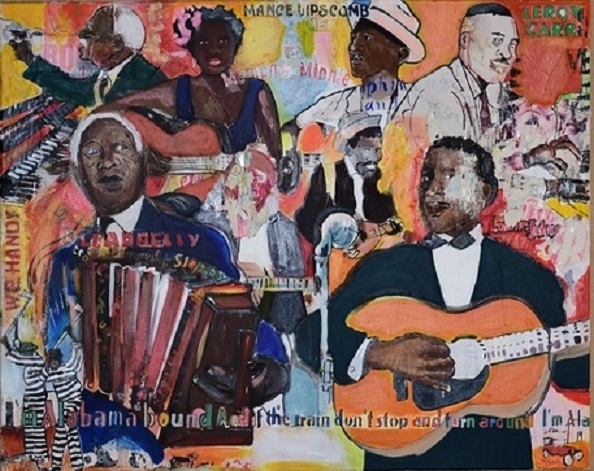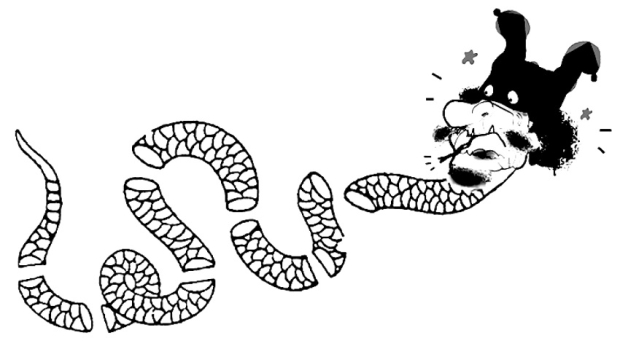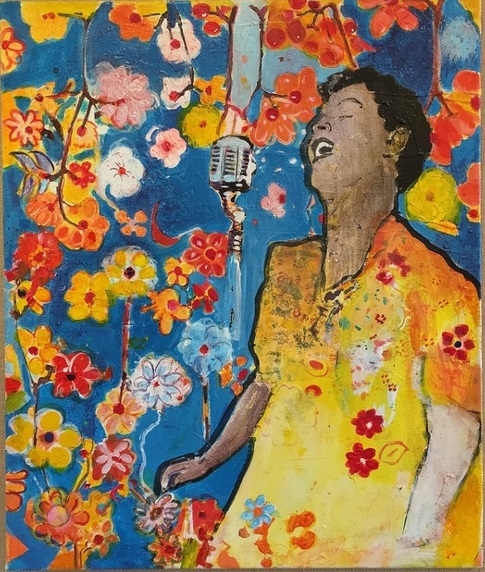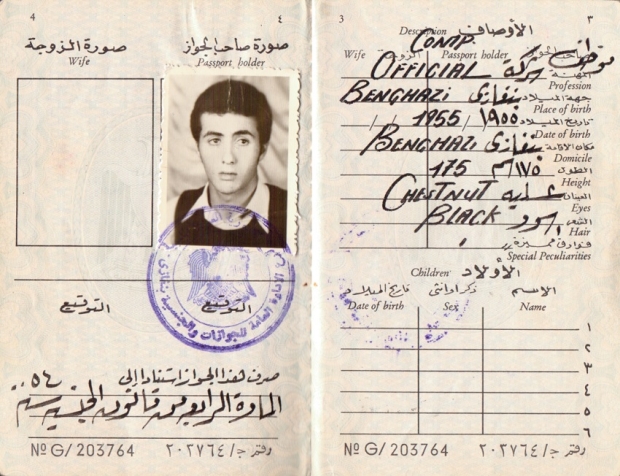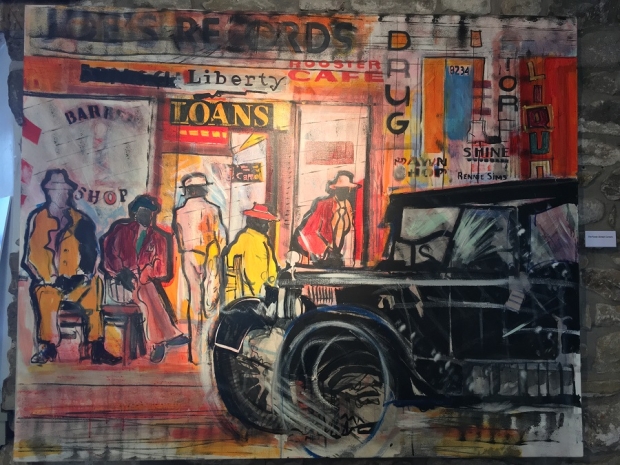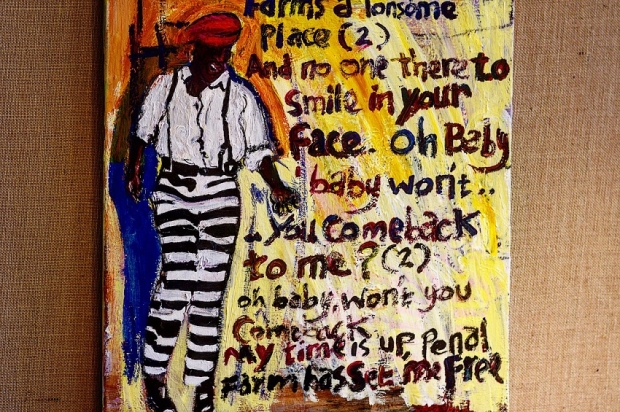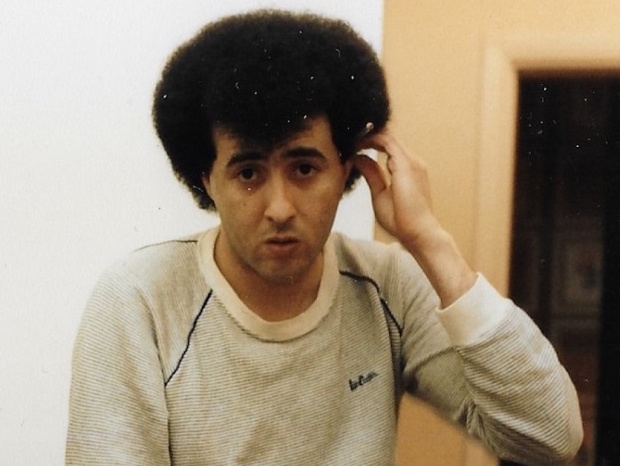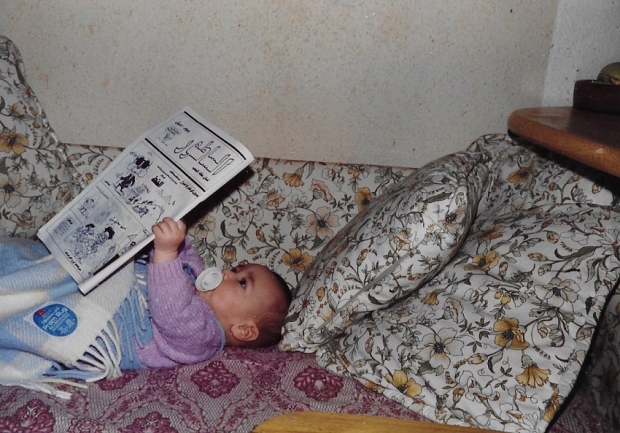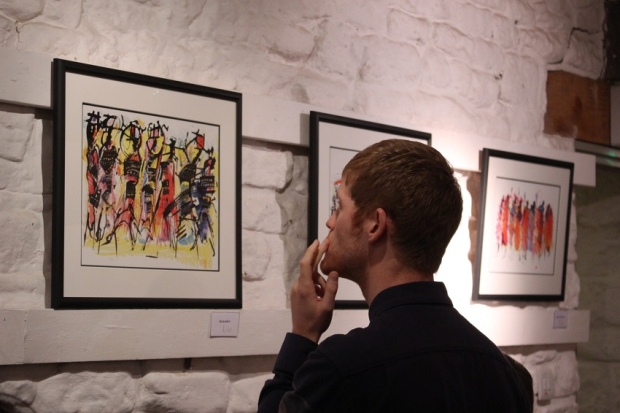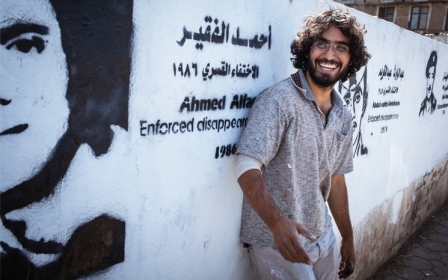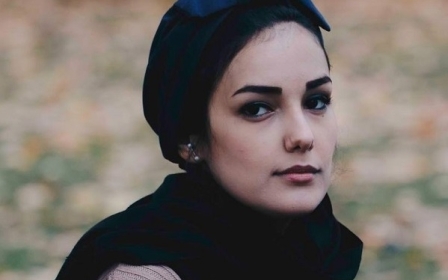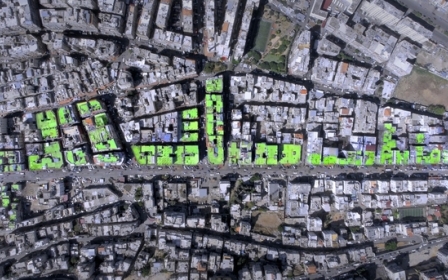Breezin’ through Burnley: A Libyan artist’s love for the blues

BURNLEY, England - The Libyan city of Benghazi is perhaps the unlikeliest place to discover Motown's classic soul and funk music.
Yet it was there in the north African city as the dust was still settling from the September 1969 coup d'état - spearheaded by Muammar Gaddafi - where the late Libyan artist Hasan Dhaimish first discovered his life-long infatuation for music.
The then 14-year-old was on the rooftop of his home when he first tuned into his shortwave radio and the soulful music of Smokey Robinson and Marvin Gaye came floating out of his speakers.
It was in a language he did not understand at the time, but the influence of Motown, the record company that propelled African-American musicians into the US global spotlight against the backdrop of the civil rights movement, was undoubtedly universal.
Renowned in Libya for his acerbic cartoons depicting morose politicians as animal caricatures, Hasan's satirical cartoons, or Alsatoor (The Cleaver) as he was known, became the voice of the Libyan opposition rallying against Gaddafi’s government.
Inspiration for art
To those familiar only with his work as his alter-ego, his art - which was simple, witty, yet incisive in its political commentary - was driven by a love for Libya and buttressed by a resolute anger towards the dictatorship that was crippling its socio-economic and political infrastructure.
When we were having breakfast in a hotel in Doha once, without me even realising, he had drawn a cartoon of every single person sitting around me
– Sherif Dhaimish
Another creative well, however, from which Hasan drew inspiration for his art was from his insatiable love for music. Dressed in flared trousers, waistcoats and sporting an afro, like a moth to a musical flame he found himself drawn to Glastonbury and reggae festivals across the UK. But it was the vivacious and soulful cadences of jazz, blues, and soul in particular, which he discovered in the 1990s, that came alive in his artwork in a series of paintings.
At the centre of a new exhibition organised by his son Sherif called "Breezin," which was held at the Pendle Heritage Centre in Lancashire from 23 March to 2 April, Hasan’s jazz and blues-inspired art pays homage to musical titans such as Billie Holiday.
Hasan’s son Sherif grew up observing his father and the ways in which he drew inspiration as a cartoonist from seemingly unremarkable moments.
"My dad was very unorthodox. He was constantly drawing in situations where people don't usually draw. When we were having breakfast in a hotel in Doha once, without me even realising, he had drawn a cartoon of every single person sitting around me. Whenever he was on the phone, even if it was the bank, he'd throw a piece of paper at you where he'd drawn you while you were sitting watching TV,” he said.
Catharsis
It wasn’t until Hasan was a teenager and his older sister was getting married that he began drawing.
What began as a form of catharsis, dealing with the departure of his sister from the family home, eventually turned into a form of political resistance against Gaddafi and his associates.
My dad lived a pretty chaotic, free-spirited life. He did things on his own terms and he was a colourful soul
- Sherif Dhaimish
In 1977, he settled in a post-industrial town in the north, called Burnley, in Lancashire, England, as an asylum-seeker.
In 1979, he married his wife Karen Waddington. After waitressing at restaurants over the years and eventually securing permanent residency, he went on to study his A-levels and undergraduate degree in Art and Design at the University of Bradford, eventually becoming a graphics and photography teacher at Nelson and Colne College.
The "Funky 16 Corners" painting is one such example where Hasan used this technique. Almost three years in the making, Sherif said his father was rarely sentimental over his paintings, but this particular painting would undoubtedly have been the one he would have refused to part with.
Jazz and blues
Hasan’s paintings burst with colour and the Herculean personalities of jazz singers such as Sarah Vaughan and Robert Johnson, whose musical expressions are defined and frozen with subtle strokes of black.
One portrait depicts a radiant, young Billie Holiday against a backdrop of flowers exploding with warmth and ochre shades, a warmth Sherif says is a manifestation of his father’s own personality.
“My dad lived a pretty chaotic, free-spirited life. He did things on his own terms and he was a colourful soul. He loved to express himself, and I think he managed to do that on the canvas,” he said.
As a student at Bradford, he was exposed to other fellow artists and music enthusiasts. His belated entry into higher education became an unlikely doorway into the music of the legendary trumpet player Miles Davis in particular, whose album Doo-Bop became the focal point of his paintings. This musical journey led him down a time-warp in which he began to look at the history of blues.
“He connected with it not just on a musical level, but the narratives that were behind blues and jazz music. With the blues, it's very sombre music that comes from the soul, and I think he appreciated that. He connected with that feeling of being an anomaly around here (Burnley) especially. It was a form of escapism for him.”
Strong influences
For Hasan, who was himself a man exiled from his homeland, the narrative of struggle, of loss, and overcoming adversity resonated deeply. It was intrinsic to blues music, a genre born from slaves who toiled in the southern plantations of America, where singing away one’s troubles came floating out of their lungs as a form of catharsis but also a form of resistance.
In the 70s and 80s, he had an Afro. He was very hip, very cool, he had a great dress sense
- Sherif Dhaimish
“Dad loved the clothes that they wore too. He himself mimicked it later in life when he wore a lot of shirts, waistcoats and [newsboy] caps. In the 70s and 80s, he had an Afro. He was very hip, very cool, he had a great dress sense.”
Flitting between dualities is how Hasan spent most of his life, alternating from his role as a teacher, encouraging individuality and creativity within his students, to the life of a political dissident masquerading under the pseudonym Alsatoor.
In 1979 in London, outside Earls Court tube station, he spotted a Libyan opposition magazine on a newsstand. He had gone there to attend a demonstration against the Libyan government.
The birth of Alsatoor
Upon returning home, he contacted the magazine and started publishing satirical cartoons for them, thus beginning his career as one of Libya’s most prolific political cartoonists where he went on to create his own magazine after his moniker Alsatoor.
His satire wasn't just sticking donkey’s tails on politicians who were buffoons
- Sherif Dhaimish
Though he was fearless, Hasan’s work was not without risk. Hasan was never attacked, but the shadow of Gaddafi loomed as far as the UK where his informants were said to be hiding, and where his death squads assassinated those in opposition to him.
Amnesty International reported dozens of such assassinations of Libyan dissidents outside Libya in the 1980s.
It wasn’t until the advent of social media that his work became popularised. Hasan never officially disclosed his identity of Alsatoor, but followers of his work inevitably began to draw the link after the Libyan revolution in 2011, as he posted the cartoons he sketched on his Facebook page which has over 40,000 followers.
After the Arab revolutions
As much as Hasan thrived on sketching his cartoons, his life as a cartoonist eventually became somewhat of a burden.
He secured a job as a cartoonist with a Libyan news channel in Doha and also 216 TV in Jordan, following the Arab revolutions in 2011.
Sherif said his father felt trapped and creatively sapped in the torrid Middle Eastern heat and sanitised surroundings of hotel rooms in Doha and Amman.
Even as rainy and as miserable as it can be here in Burnley, it was home for him. He found painting and walking in this kind of weather very inspiring
- Sherif Dhaimish
“In the last five years of his life, the satire work took up a lot of his time. In Doha he felt he didn't have the inspiration to paint. It was a place that lacked soul. Even as rainy and as miserable as it can be here in Burnley, it was home for him. He found painting and walking in this kind of weather very inspiring.
"After the revolution, there were so many times where it was two steps forward, ten steps back with Libya. He just wanted to go back to Benghazi, put his feet in the water, and say, 'I can see it's a mess here, but I’m back now, I’ve done it and now I can just carry on with my life.' He was constantly clawing towards going back, but unfortunately it never materialised. He was never able to go back because it was too dangerous. There were too many assassinations.”
Hasan passed away in 2016 at the age of 60.
“I wanted to show people who only knew of his satire work what other work he did and where it was rooted. In the last few years of his life, he left the UK and his family behind for the Middle East because he felt it was his duty to do that. His satire wasn't just sticking donkey’s tails on politicians who were buffoons.”
Sherif explains that his father left a mark on his followers, especially young Libyans.
"Talk to any of his former students, and they’ll tell you what a true teacher he was. He passed on wisdom and he shared ideas with young teenagers who had an interest in art. He tried to open people's minds, and I think he was successful in doing that.”
New MEE newsletter: Jerusalem Dispatch
Sign up to get the latest insights and analysis on Israel-Palestine, alongside Turkey Unpacked and other MEE newsletters
Middle East Eye delivers independent and unrivalled coverage and analysis of the Middle East, North Africa and beyond. To learn more about republishing this content and the associated fees, please fill out this form. More about MEE can be found here.


